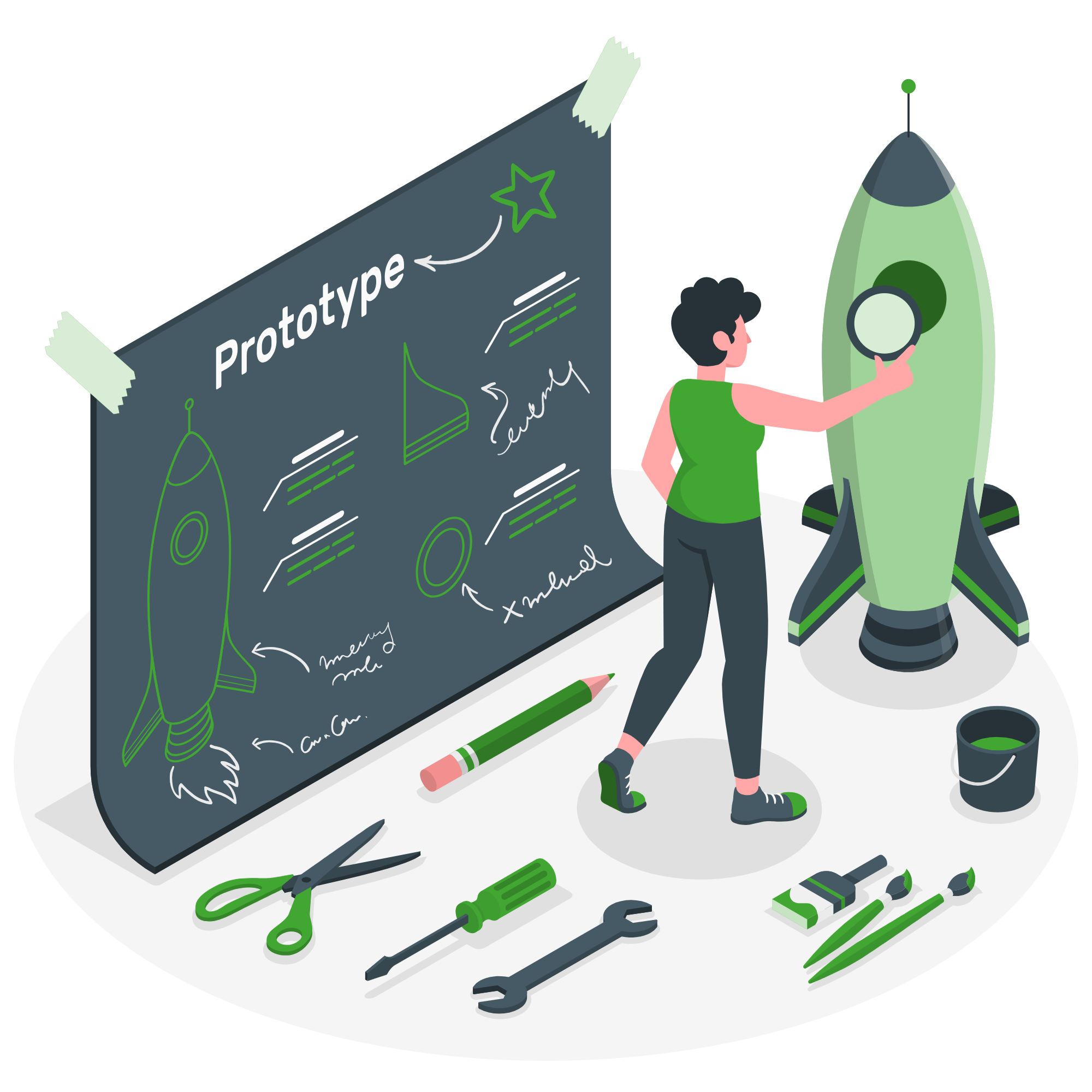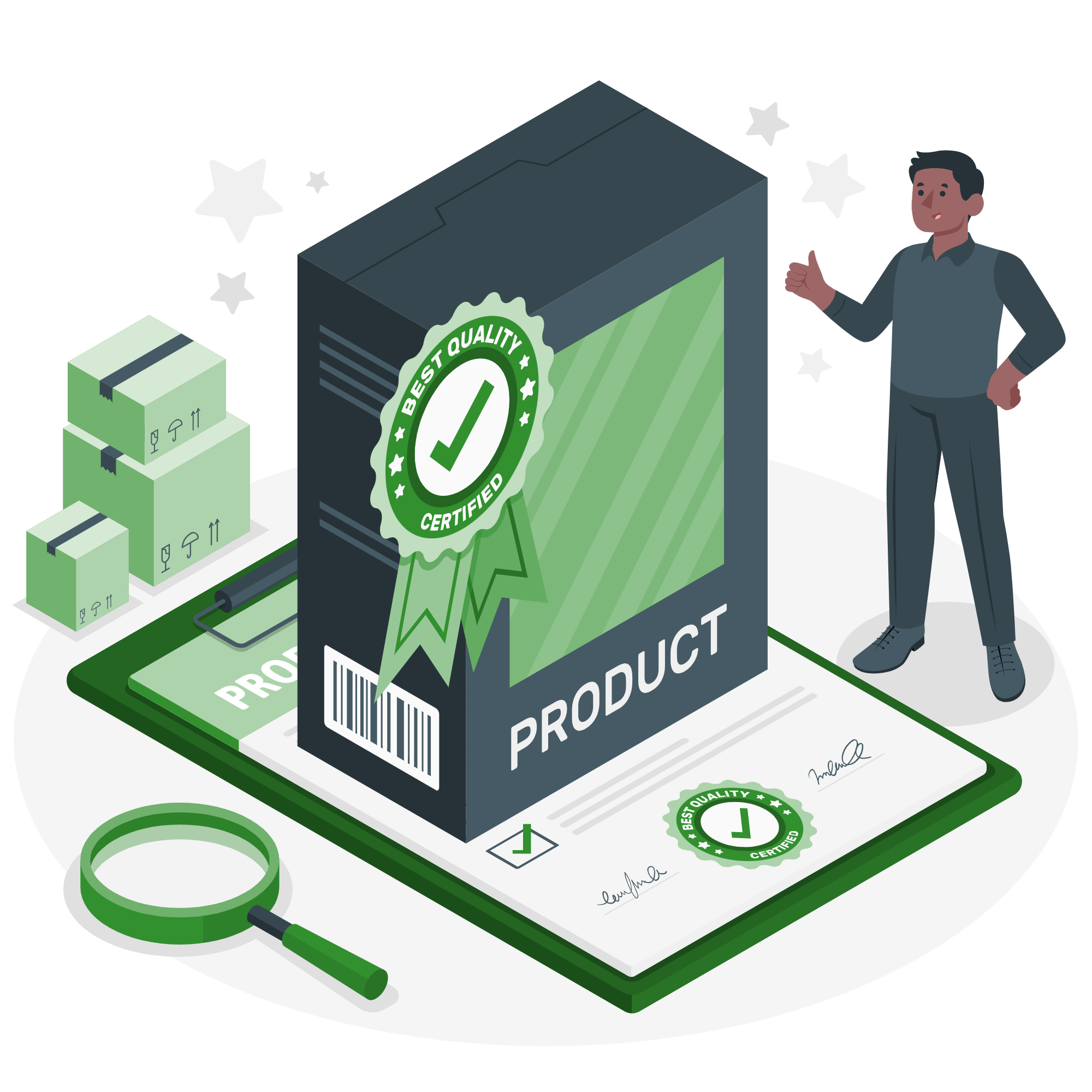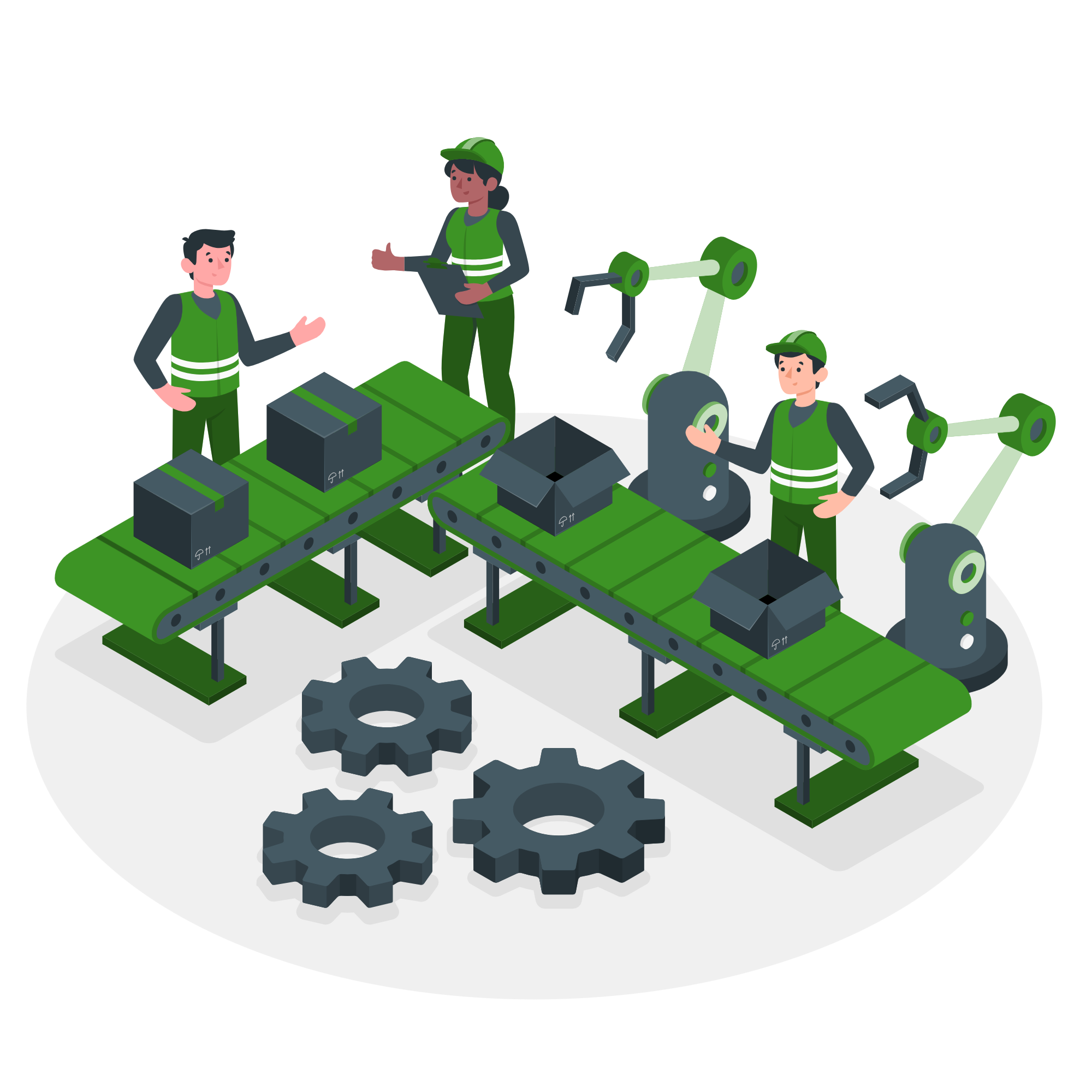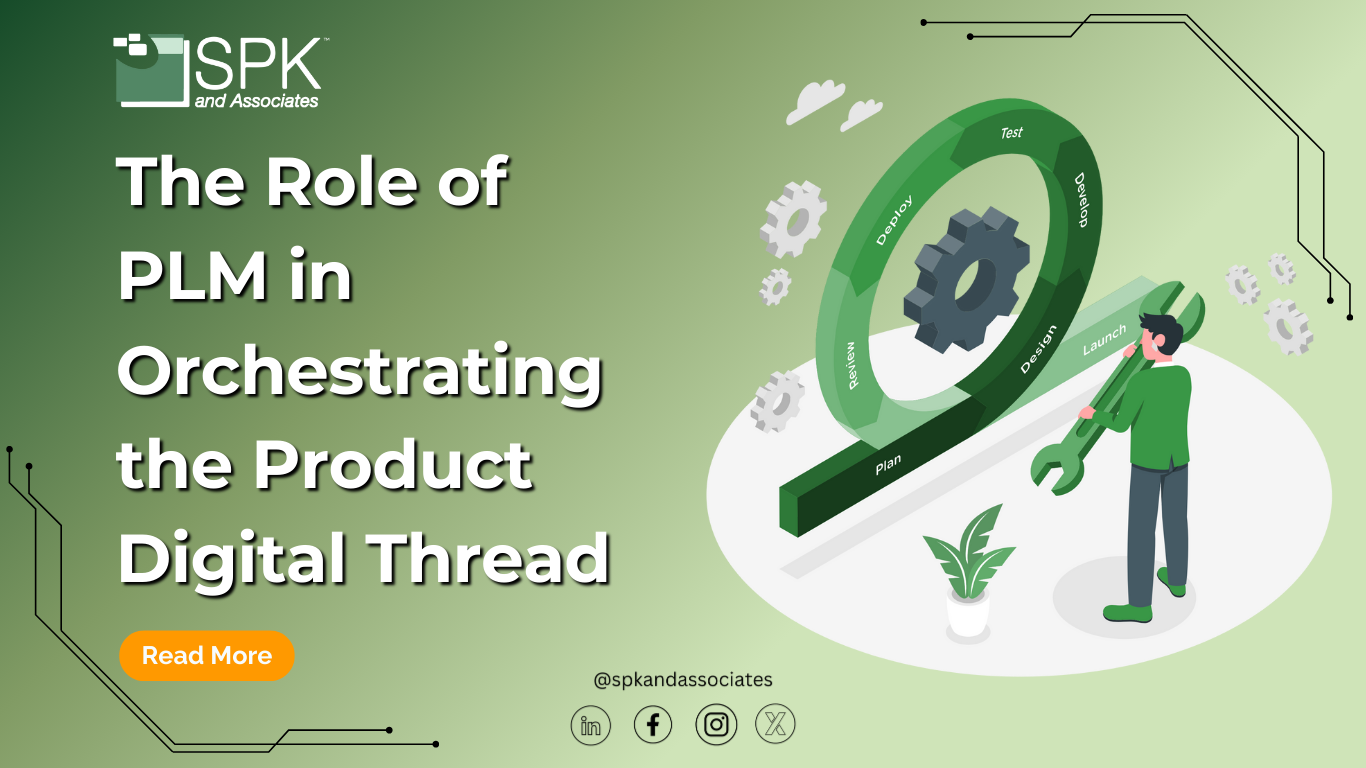Product Lifecycle Management (PLM) plays an important role in the manufacturing industry. Ensuring all factors of a product are well-documented is a priority for every business. Keeping this information organized is not just a good business practice, but it guarantees data is accessible during every stage of a product’s lifecycle and assists in compliance requirements. This flow of data is called the digital thread. Today we will explore PLM’s role in managing the product digital thread.
PLM vs The Product Digital Thread
Before we dive into how PLM and the digital thread are integrated, let’s define them. Product Lifecycle Management refers to the management of every factor of a product from conception to disposal. This includes data management, documentation, workflow automation, and more. PLM is typically done by a team aiming to get a product to market faster. PLM has many benefits such as improved product quality, reduced costs, and better compliance.
The product digital thread, though related to PLM, is an entirely different concept. The digital thread is defined as the seamless flow of data throughout a product’s lifecycle. It encompasses all the data from a product’s design to its disposal. The digital thread allows data produced at one stage of a product’s lifecycle to be used during a different stage. This use and reuse of data is efficient, leading to better product quality and satisfied customers.

Benefits of PLM and The Product Digital Thread
Now that PLM and the digital thread have been defined, let’s dive into how the two integrate. PLM provides the tools necessary to manage the data in the digital thread. In a way, PLM serves as a backbone for the digital thread. It not only seamlessly processes the data throughout the lifecycle, but provides a central hub for managing product data. The integration of these processes leads to the following benefits for manufacturing companies.
Regulatory Management
Ensuring products meet regulatory compliance standards becomes simple with the help of PLM and the digital thread. PLM helps embed compliance criteria in the project digital thread which is then used in every stage of the product lifecycle. This compliance criteria ensures tasks such as change management and documentation are up to regulatory standards. Some documentation may include adverse event reporting otherwise known as incident reporting. The benefit of embedding these reports into the digital thread is ensuring timely and accurate reports to authorities. In addition to this, PLM can centralize product submissions, simplifying users’ abilities to approve, certify, or register products to meet compliance standards. Lastly, PLM systems provide external partners secure access to compliance data. This also allows the data to be easily formatted. All the embedded criteria and accessibility tools create a repeatable regulatory framework continuously used to ensure compliance.

Quality by Design
QbD is an approach focused on designing quality into products from the start, rather than waiting until testing to ensure quality. PLM integration with the product digital thread helps better utilize customer data. This data, also known as customer and product usage refers to how customers use a product in the real world. It includes topics such as usage patterns and customer preferences. When integrated into the digital thread, this data can be used to design better products and increase customer satisfaction. Similarly, operation conditions can be used to improve products. Operation conditions are the environmental conditions in which a product is used. This data includes factors such as temperature, humidity, and chemical exposure. Incorporating this data into the product digital thread improves products from the start of the product lifecycle.
Customer Facing Product Information
Similarly to improving quality, PLM helps improve the customer experience. CFPI is all the information about a product that customers may reference. Examples include product descriptions, labels, user manuals, and website information. Management of this information becomes easier when integrated with a PLM system. For example, PLM systems can integrate with augmented reality (AR) technology to create new ways to interact with products. AR enables users to visualize their products in new immersive ways. Additionally, PLM platforms can integrate with illustration software, allowing users to create drawings while directly accessing their digital thread content. Both of these abilities allow users to improve CFPI, enhancing customer engagement and user experience.
Manufacturing Execution
Before a product can make it into the customer’s hand, it must be manufactured. Manufacturing execution is defined as the management of production processes to ensure the efficient manufacturing of products. With PLM integration, users can deliver work instructions based directly on information in the digital thread. Users get their information from an Engineering Bill of Materials which is stored in the digital thread. This list contains all the engineer-designed components that make up a product. With this access, manufacturing team members on the shop floor are given instruction directly based on the eBOM. This eliminates confusion and ensures efficient manufacturing.
Manufacturing Engineering
While manufacturing execution improves product manufacturing, manufacturing engineering optimizes the manufacturing process. One way a PLM system aids engineers is by allowing them to derive mBOMs from eBOMs. A Manufacturing Bill of Materials is similar to an eBOM except it includes details such as part numbers and assembly sequences. This information aids manufacturing teams in their work.
In addition to this, a PLM allows users to create process plans from the upstream eBOM. Process plans are outlined for how to manufacture products. They show details such as what resources are used and the sequence of operations. An upstream eBOM however is just an eBOM created during the design phase. Using this design information helps ensure manufacturing activities align with quality standards.

Similarly to this, manufacturing engineering also uses Model-Based Definition (MBD) to ensure the quality of control characteristics. Control characteristics are the critical features ensuring the quality and performance of a product. MBD uses 3D CAD models to extract information on geometric dimensioning and tolerancing (GD&T). This information is then used to ensure products meet design expectations and quality standards.
Supply Chain
PLM systems have the ability to manage vendor and supplier information. Users can access contact information, certifications, and capabilities all from one place. This accessible system also enables sharing. PLM systems are built for collaboration and supply chain partners can easily access up-to-date information if it is shared with them. If businesses prefer not to share access to their system, they can encrypt files to confidently and securely share documents.

Enterprise Visualization
In addition to management capabilities, PLM systems also provide visualization tools. These tools can be used in many ways. The first way is through interactive viewing. For example, a 3D model such as a CAD model can be viewed by all users in real time. These users may make annotations or provide feedback directly in the model. Visualization also provides a way to validate products before they are sent to production. Businesses can create a virtual prototype or simulation in which users can test the product before it is physically created. Lastly, these visualization tools allow users to collaborate to evaluate products. This collaborative nature improves the efficiency of the evaluation process.
Platform and Family Management
PLM and the digital thread play important roles in streamlining product creation based on platforms or families of products. A product platform is a group of standardized components that apply to a group of products. Product families are groups of products that share characteristics. PLM and the digital thread provide tools and capabilities for creating, managing, and evolving product platforms and families.
BOM Management
BOM data is easily managed through the central repository provided by a PLM system. The product digital thread then connects this BOM data with all product-related data throughout the product lifecycle. Additionally, PLM systems integrate with CAD systems which synchronizes BOM data with CAD models and drawings. This visualizes the BOM which ensures all design changes are accurate.
Product Design
PLM isn’t just for managing, it can also provide tools for creating 3D content. PLM systems allow users to create semantic-rich 3D models of products. It then manages this content for them. Semantic-rich refers to the metadata adding context and meaning to the models, making them more useful for applications. Fortunately, the digital thread ensures downstream use for the models, making them useful at every stage in the product lifecycle.

Digital Product Traceability
Lastly, PLM systems allow users to track the lifecycle of a product. PLM systems provide tools for documenting and managing customer needs and requirements throughout the product lifecycle. This ensures customer satisfaction. Additionally, PLM systems enable traceability which ensures customer needs are met every step of the development process.
Ready to Implement PLM for The Product Digital Thread?
There are seemingly endless benefits to incorporating PLM with the product digital thread. The integration increases efficiency, improves customer satisfaction, and ensures compliance. If you are looking for a PLM solution, we recommend PTC Windchill. Alternatively if you are looking for someone to manage your products, our experts can help. If you have any questions about PLM or the product digital thread, contact one of our experts today.






